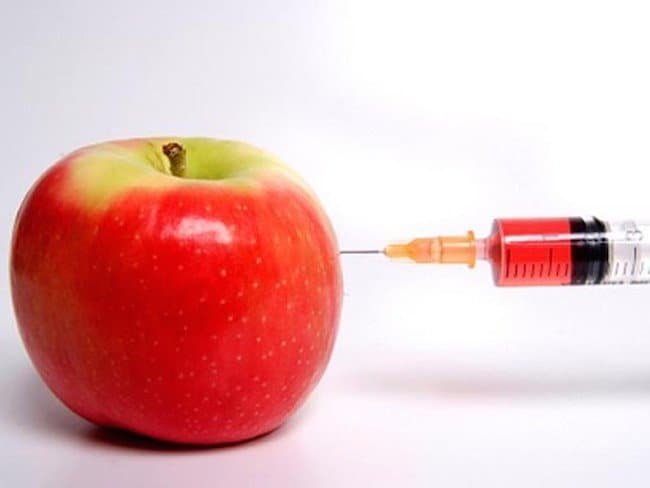
Genetically modified foods are fast becoming a common occurrence on supermarket shelves, with an estimated 60 to 70% of processed foods in the U.S. containing genetically modified ingredients, and are likely to become more and more common as technology advances and traditional methods of food growth and production fail to meet growing demands.
However, there is a huge amount of controversy surrounding food that has been genetically engineered and the potential it has to affect our health, the environment and the food chain.
What are GM foods?
Genetically modified, (GM), foods are organisms which have had their genetic material altered in some way that does not occur naturally. Genes from one organism are transferred into others to create genetically modified plants.
In this way it is possible to choose certain characteristics displayed in one species and implant these desirable traits into another. For example, the gene which codes for vitamin A production has been transplanted into the rice genome, meaning that the new GM variety of rice has a high content of vitamin A where it would normally have a low content of the nutrient.
What are the benefits of GM foods?
GM foods have been created because they are perceived to have an advantage over the original. The advantage could be in the form of nutrition value, which is beneficial to the consumer and indirectly to the producers who can use it as a selling point, or an advantage in growth or production that makes it easier to produce the plant and therefore the food in large quantities.
The main advantage of the first GM crops was that they increased production and decreased costs due to inserted genes that allowed them to grow under specific desirable conditions. These genes gave them characteristics such as increased resistance to viruses or pests and higher tolerance to herbicides.
This is obviously beneficial for the producers in terms of cost efficiency, but may also be part of a solution for creating a larger food supply in an ever growing global population. Although increased production is the most common reason for genetically modified foods, the technology opens up a huge field of possibility in terms of increasing nutritional value of foods, even to the point of using certain modified foods to treat potentially devastating nutritional deficiencies.
Are GM foods bad for our health?
The World Health Organization states that it is not possible to confirm the safety of all genetically modified foods, due to the differences in the way genes are inserted, however, they also suggest that foods currently available to the public should be safe for consumption due to strict testing and assessment protocols that are in place.
Although GM foods are still relatively new, no adverse health outcomes have been reported to date in countries that have approved their use.
There is still some debate however as to how the technique could have adverse effects on our health. One concern is that genetically modified foods may be more likely to provoke allergies due to genes from other species being present, but consumers not being aware of the fact.
For example, if a gene from a peanut was incorporated into another foods genome, would it trigger an allergic reaction in those sensitive to peanuts? However, to counteract this possibility, using genes from highly allergenic food is discouraged and tests are in place to determine if the protein produced by the gene is likely to have an allergenic effect.
Another area of concern is that using antibiotic resistant genes in GM crop production could result in the production of antibiotic resistant bacterial strains that could endanger the population. However, once again, the possibility is low and experts are now encouraging the use of different technologies that do not require an antibiotic resistant gene.
Concerns were also voiced as the potential for GM foods to be less nutritious that conventional foods and may not have the same health benefits, but testing thus far has not confirmed these theories.
Conclusion
In general, it has been concluded that GM foods available on the market for human consumption can be considered safe; however, further research is required as to the possible long term effects on the human population.
Current testing procedures for GM foods in the U.S. are at least as stringent as those for conventional food products, in some cases more so, and it should be noted that even non-GM foods have the potential to do harm and there is no 100% guarantee that any food we eat is completely safe.
The technology is supported by the majority of health organizations including the American Medical Society, suggesting that as far as current knowledge goes, these products are safe for consumption.
Furthermore, the technology used in creating genetically modified foods has the potential to confer health benefits to the human population, although this is not common practice as yet.
References used in this article










